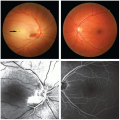Disorder |
Bleeding |
Microthrombosis |
Macrothrombosis |
Consumptive coagulopathies (DIC) |
Variable, depending on cause |
Variable, cerebral (mental status), renal (oliguria), skin (purpura fulminans); limb necrosis (acquired protein C depletion) |
Variable, large vein and artery thrombosis with underlying adenocarcinoma or HIT, or with use of antifibrinolytic therapy |
TTP-HUS |
Usually no bleeding, but petechiae and ecchymoses possible with severe thrombocytopenia |
Organ dysfunction (CNS, renal) due to arterial platelet-vWF microaggregates |
Occasional cerebral artery (thrombotic stroke in children with congenital form) |
Vasculitides |
Gl bleeding (if vasculitis involves Gl tract, e.g., polyarteritis nodosa); dermal hemorrhage (small-vessel vasculitis); hemoptysis (pulmonary capillaritis) |
Variable, “palpable purpura” is a feature of small-vessel vasculitis; renal, neurologic, and other organ dysfunction |
Macrothrombosis can be mimicked by nonthrombotic vasculitis—related vessel obstruction (e.g., intimal hyperplasia in giant cell arteritis) or large-artery dissection; aneurysmrelated thrombosis |
APS |
Bleeding uncommon; when present, usually results from associated thrombocytopenia, low factor II, or anticoagulant therapy |
Microvascular thrombosis and multiple organ failure in severe cases |
Venous thrombosis in unusual sites (upper limb, abdominal, renal, cerebral), PE, coronary artery, cerebral artery (stroke, TlA), retinal ischemia, nonbacterial endocarditis; hemorrhagic adrenal infarction; recurrent fetal loss (placental infarcts) |
MPN |
Mucocutaneous, CNS, retinal, retroperitoneal, deep tissue, postoperative, aspirininduced |
PV and ET: intracranial (headache, visual disturbances), digital ischemia, erythromelalgia |
PV and ET: cerebral artery (transient ischemia or thrombotic stroke), retinal vein occlusion, cerebral sinus thrombosis, coronary (acute Ml, coronary syndromes), DVT, PE, mesenteric/portal/hepatic vein thrombosis |
Stem cell transplant |
Mucocutaneous bleeding with severe thrombocytopenia; diffuse alveolar hemorrhage; hemorrhagic cystitis |
Hepatic veno-occlusive disease; TMA |
Venous thromboembolism (DVT, PE) |
Sepsis |
Bleeding associated with thrombocytopenia, elevated PT or aPTT |
Variable, organ dysfunction and dermal/acral necrosis |
Uncommon; if DVT present, predisposes to peripheral limb ischemia/necrosis |
HIT |
Bleeding uncommon, except during anticoagulant therapy |
Usually associated with coumarin; rarely, overt consumptive coagulopathy |
DVT and PE, cerebral vein thrombosis, limb artery thrombosis, cerebral (stroke), coronary (acute Ml), hemorrhagic adrenal infarction |
Coumarininduced necrosis |
Early skin necrosis may resemble cutaneous hematoma |
Thrombosis of subdermal venules (skin necrosis), venous limb gangrene |
Associated large vein thrombosis predisposes to subtending microvascular thrombosis and acral limb necrosis |
MPN, myeloproliferative neoplasms; CNS, central nervous system; PV, polycythemia vera; ET, essential thrombocytosis; DVT, deep vein thrombosis; CI, gastrointestinal; Ml, myocardial infarction; PE, pulmonary embolism; DIC, disseminated intravascular coagulation; HIT, heparin-induced thrombocytopenia; PT, prothrombin time; aPTT, activated partial thromboplastin time; TTP-HUS, thrombotic thrombocytopenic purpura-hemolytic uremic syndrome; vWF, von Willebrand factor; APS, antiphospholipid syndrome; TIA, transient ischemic attack. |









